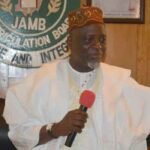Bordering to the south of the city’s mining belt, Soweto started as a result of the rise in the eviction of Africans by the colonialists. South Africans, along with their Indian counterparts who had been recruited to work on the gold mines were housed in the outskirts of Johannesburg. They were later moved from such locations as Brickfields to an ‘evacuation camp’ at Klipspruit in 1904.
Many parts of Soweto rank among the poorest in Johannesburg, although individual townships tend to have a mix of wealthier and poorer residents.
It is considered a major birthplace of South African hip-hop style music Kwaito, which became a strong force amongst black South Africans. “The spread of Soweto in popular culture worked both ways, as American hip-hop artists Hieroglyphics rap about the terrible conditions and changing social order in their song ‘Soweto’, saying that cowardice has ruled this area, but how now the ‘gems’, or black youth, need to express themselves. This appears to be Hieroglyphics attempt to urge a critical, political version of hip-hop in South Africa.
Today, Soweto is home to about 1,300,000 people and receives an unending stream of tourists from all over all year round.
Historic sites lacing the city include the Chris Hani-Baragwanath, Orlando Stadium, Vilakazi Street, Hector Pieterson Museum, Nelson Mandela National Museum and the Regina Mundi Church amongst others.
Baragwanath Hospital
Renamed in 1997, honour of Chris Hani-Baragwanath, South African Communist Party leader who was assassinated in 1993 by white extremists, the Hospital was built in 1941 after the Second World War and was named John Albert Baragwanath.
Constructed to serve as a British Military Hospital, John Albert Baragwanath initially owned the situated site as a hostel, The Wayside Inn, until the British Government paid £328,000 to make it a hospital. “Field-Marshal Jan Smuts noted during the opening ceremonies that the facility would be used for the area’s black population after the war. In 1947 King George VI visited and presented medals to the troops there. From this start grew Baragwanath Hospital (as it became known after 1948), reputedly the world’s largest hospital.”
Hector Pieterson Museum, Orlando West
The Soweto Uprising drew the world’s attention on June 16, 1976, when school children staged mass protests over government’s policy to enforce education in Afrikaans rather than English. Police opened fire in Orlando West on ten thousand students marching from Naledi High School to Orlando Stadium.
Twenty people were killed people including two white people. Twelve year-old Hector Pieterson was the first to be killed when the police began to open fire on the students. A museum was set up in his honour.
Also killed was Dr. Melville Edelstein, a social welfare officer among blacks. He was stoned to death by the mob and left with a sign around his neck proclaiming ‘Beware Afrikaaners’.
Children who into the Regina Mundi Catholic Church for refuge, were followed by gunmen who shot at them inside the church. Today evidences of what went on that fateful day have been preserved for all t see.
The impact of the Soweto uprising reverberated through the world. As a result of this incidence, since 1991 this date and the schoolchildren have been commemorated by the International Day of the African Child.
 Join Daily Trust WhatsApp Community For Quick Access To News and Happenings Around You.
Join Daily Trust WhatsApp Community For Quick Access To News and Happenings Around You.


